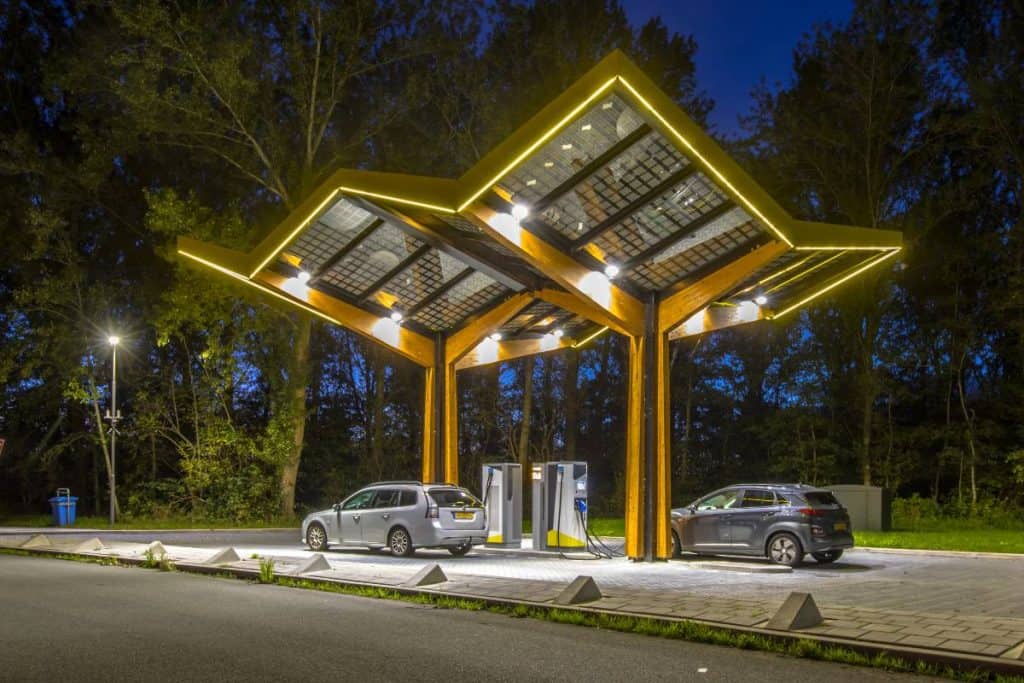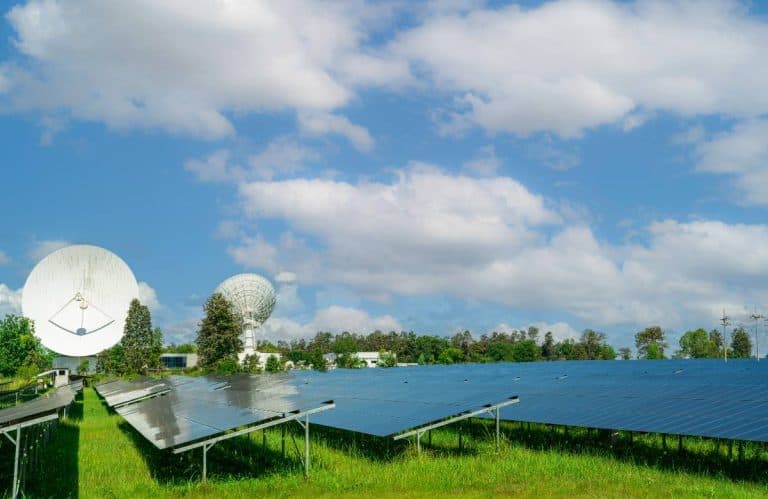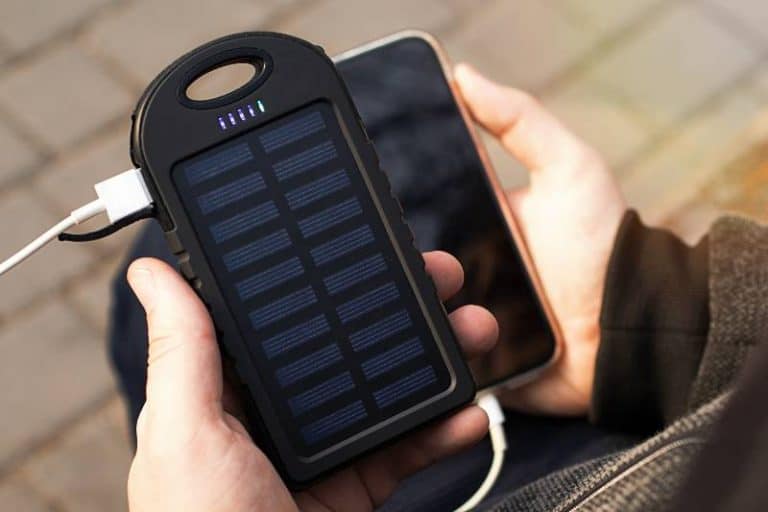Wireless EV Charging Pros and Cons Analyzed [2024]
Wireless charging has emerged as an intriguing innovation in the electric vehicle landscape. As the founder of Electrik Living, I’m constantly exploring new technologies that can empower EV owners and promote sustainable transport. Naturally, wireless charging has caught my attention.
How exactly does wireless EV charging work? It allows power transfer from a charging station to a vehicle without cables, connectors, or plugs. It relies on electromagnetic fields to transmit energy between two pads – one integrated on the ground or charging station and one fitted on the vehicle.
Wireless charging offers the alluring possibility of pulling up to a parking spot and automatically charging your EV without any cables. But does the convenience justify any tradeoffs? Let’s dive deeper into the pros and cons.
Key Takeaways
- Wireless charging offers convenience and potential time savings for EV owners by eliminating plugging in.
- Charging speeds and efficiency still lag somewhat behind wired charging.
- Costs of wireless charging infrastructure remain high but are expected to drop over time.
What is Wireless Charging for Electric Vehicles?
Wireless EV charging relies on two main components. A charging pad, transmitter coil, or antenna is located on the ground or in a charging station. A receiver pad or coil is mounted on the vehicle’s underbelly. The energy transfer occurs through a magnetic field between these two components without metal-to-metal contacts.
Understanding the technology behind wireless charging
Electromagnetic induction allows electricity to flow wirelessly between the two components to charge the vehicle’s batteries. While similar in principle to wireless phone charging, adjusting the technology for EV charging requirements involved overcoming tougher engineering constraints around voltage, power levels, and charging speeds.
Advantages of wireless charging for electric vehicles
For drivers, wireless charging offers unmatched convenience, eliminating handling charging cords. Just driving over a wireless pad commences automated hands-free charging. Reduced risks, minimal wear and tear, easier infrastructure integration, and future-proofing the transition to EVs are other notable benefits.
Disadvantages of wireless charging systems
However, infrastructure rollouts can be expensive initially – from upgrading power grids to installing receiver pads on vehicles. Lower efficiency causing more energy losses during wireless transfer is another current key limitation.
Impact on the future of electric vehicles
However, ongoing innovation is addressing these constraints through solutions like dynamic charging of moving vehicles using electrified roadways. Overall, the market outlook remains highly promising with a 42% CAGR growth forecast by 2027 as wireless charging aims to dominate EV infrastructure.
Comparison with traditional wired charging
Presently, wireless charging lags wired systems slightly regarding speeds, costs, and efficiency – but advancements in resonant magnetic coupling and inductive power transfer are closing these gaps rapidly. And nothing beats wireless charging for sheer convenience during daily use.
How Does Wireless EV Charging Work?
Let’s zoom in on some key aspects of the wireless charging process itself from infrastructure needs to power flows.
Wireless charging infrastructure and charging pads
Wireless charging is highly flexible infrastructure-wise – charging pads can be laid on driveways, garage floors, parking spots, and more. However, upgrading electrical panel capacity and installing power regulation systems adds complexity.
Charging efficiency and speed in wireless systems
End-to-end energy transfer efficiency rates today range around 90% – adequate but lower than wired charging. However, efficiencies as high as 97% have been demonstrated in trials. Speeds currently max out at around 22 kW, trailing 50 kW+ fast wired charging.
Exploring the charging process and technology
The system functions analogously to wireless phone chargers. An alternating current input gets converted into high-frequency alternating current to transmit energy via magnetic coupling between the charging pad and receiver coil. The induced current charges the EV battery after appropriate voltage conversion.
Advantages and disadvantages of wireless electric vehicle charging
While wireless charging wins big on user convenience, work is needed to match wired system speeds and costs. But the industry momentum is undeniable – wireless charging capability is rapidly becoming a must-have feature for EVs.
Future developments in wireless charging technology
Ongoing advances target seamless charging on the move by installing pads under highways. Smart charging networks capable of automatic authentication and billing linked to power grids are also emerging. Such innovations promise to provide simple, efficient, and flexible power across the transportation ecosystem.
Challenges and Considerations with Wireless Charging
For all its advantages, certain issues around wireless EV charging require attention for successfully unlocking its potential.
Risk of electric shock and safety concerns
Fortunately, wireless charging is safer than plugging vehicles in – removing exposed cables and high voltage connectors reduces electric shock risks significantly both for users and during equipment servicing.
Impact on charging time and potential slower charging
Slower charging compared to wired systems does mean extended charging times currently. But for overnight charging at home, speed is less critical than convenience. Public charging points will require faster wireless charging.
Comparison with traditional wired charging stations
Wired charging stations have prevailed until now given higher speeds, efficiency, and lower costs. But wireless charging offsets these factors by offering a superior driving experience through unmatched flexibility and ease.
Charging infrastructure and the need for expansion
Seamless adoption requires significant expansion and upgrades for electrical infrastructure, from grids to charging networks to vehicles. But the demand drivers make this a necessary evolution as EVs enter mass adoption.
The potential of wireless charging to revolutionize EV charging
In essence, wireless charging promises to transform passive charging stops into quick convenient charging experiences integrated with mobility services – a game-changer benefit as urbanization intensifies and EVs keep growing.

Advantages and Disadvantages of Wireless Charging
Harnessing the upsides of wireless systems while addressing current limitations will accelerate adoption.
Examining the pros and cons of wireless charging technology
Ease, flexibility, and automation make compelling advantages of wireless charging over handling heavy cords. Moderate efficiency losses and higher costs are the tradeoffs – but rapidly closing gaps as tech innovations kick in.
Understanding the advantages of wireless EV charging
Key perks include enhanced safety, reduced wear and tear on vehicles, easier infrastructure rollouts, and the gateway to automated charging across transport ecosystems.
Exploring the disadvantages and limitations of wireless systems
Slower speeds compared to ultra-fast wired charging stations and constraints around transferable power levels do hamper wireless systems today. Interoperability also needs standardization.
Comparing wireless charging with traditional charging solutions
Wireless charging wins overwhelmingly on convenience while wired stations outperform on costs and charging speed. As the tech potential unfolds, expect wireless charging to start dominating.
Potential impact on the future of electric vehicles and charging infrastructure
Mainstream adoption of wireless charging will open doors for embedding charging capability across modern transport infrastructure – a game changer for transitioning faster to EVs as the norm rather than an exception.
The Future of Wireless Charging for Electric Vehicles
Where is wireless EV charging headed as cutting-edge developments start permeating real-world infrastructure?
Fast charging and the potential for dynamic wireless charging
Fast charging innovations will shrink speed gaps compared to wired charging significantly, even enabling continuous on-the-move charging via electrified roads as dynamic wireless charging unfolds.
Exploring the evolution of EV charging infrastructure
Sensored pads automatically initiating secure billing and power transfers signal the next generation of smart bidirectional charging platforms that integrate widespread wireless power capability.
Potential challenges and opportunities in wireless power transfer
Expanding capacity to transfer higher loads safely and implementing interoperability protocols remain challenges while the shift to EVs itself provides lucrative prospects for wireless charging firms participating in the transition.
The impact of wireless charging on the electric vehicle industry
Mainstream wireless charging adoption essentially signals the dawn of convenient, automated charging experiences, unlocking simpler EV adoption and fostering future mobility ecosystems.
Advancements in wireless charging technology and charging power
Ultra-thin, inexpensive charging surfaces transferring very high loads over larger distances could effectively realize the wireless power transfer utopia that spells the definitive end for manual plug-in charging.
Comparing Wireless Charging Infrastructure for EVs
A key question is whether wireless charging can efficiently power electric vehicles without significant energy losses.
- Current wireless charging systems achieve roughly 90% efficiency – slightly behind most wired charging. However, technology improvements targeting 95%+ efficiency are underway.
- Costs for wireless charging stations remain high due to infrastructure and integration challenges. However, prices are expected to decrease as adoption and manufacturing scale increases.
- Regarding safety, wireless charging is considered very low risk thanks to the lack of high voltage exposure. There are no reports of electric shocks or similar hazards. Interference with other car electronics seems unlikely too.
So in summary – wireless charging has acceptable efficiency now and targets major gains soon. While presently more expensive, costs should fall notably over the next 5 years making adoption more feasible.
Assessing the Impact on the EV Owner Experience
For individual EV owners, two major considerations are charging convenience and speed.
- The big appeal of wireless charging is removing the need to handle charging cables. Just park and walk away. No more messing with dirty, icy, or misplaced plugs!
- However, with misaligned vehicles charging speeds can suffer. Parking precisely over the wireless pad is important for maximum power transfer. Surprisingly though, today’s systems offer flexibility within several inches.
- Currently, charge times run 50-100% slower than wired rapid charging. But for overnight charging convenience usually overrides speed considerations. As the tech evolves, speed gaps should narrow as well.
- An ongoing challenge is standardization. Wireless charging systems differ across EV makes and models right now. However, the industry is actively collaborating to develop cross-compatible solutions.
So wireless charging offers superior convenience today and should reach speed parity in the foreseeable future. The customer experience benefits significantly as a result.
The Future Possibilities of Wireless Charging Technology
Wireless charging continues to rapidly mature – what does the future look like? Exciting innovations aim to improve efficiency, and speed while cutting costs.
- Dynamic charging allows power transfer while driving. Experiments embedding wireless pads in highways to constantly charge vehicles are unfolding. This could greatly expand EV range and minimize charging stops.
- Smart charging networks that wirelessly identify vehicles, bill users and integrate bidirectional power flows are being built now. This infrastructure could help balance loads on electricity grids using fleets of wirelessly connected EVs.
- With stunning 97% efficiency demonstrated already, wireless charging is nearing cost and performance parity with plug-in systems. This helps pave the way for mass adoption in commercial transport, logistics, and passenger vehicles.
In essence, wireless charging aims to provide seamless, automated power – transforming how EVs integrate with smart infrastructure. As costs decline, expect wireless charging capability to become a baseline feature for electric vehicles.
FAQs
How efficient is wireless EV charging compared to traditional plug-in charging?
Most wireless charging systems today achieve around 90% efficiency, slightly under wired charging at 95-97% efficiency. But new wireless charging innovations target 97%+ efficiency as technology improves.
Do wireless charging speeds match plug-in charging for EVs?
Currently, wireless charging for EVs is generally 50-100% slower than rapid plug-in charging. So wired charging still charges faster, but wireless charging speeds continue improving and the convenience factor remains very compelling.
Is wireless EV charging safe for electric vehicles?
Yes, wireless charging is considered extremely safe since high-voltage cables are eliminated. There is no risk of electric shock and minimal fire risk relative to exposed charging connections.
Will wireless charging work on all-electric vehicle models?
Not yet, but standardization efforts between automakers and tech firms aim to soon make wireless charging widely compatible across most EV makes and models.
When will wireless charging become mainstream for electric vehicles?
As technology improves efficiency beyond 95% and costs come down, wireless charging is expected to rapidly gain mainstream consumer adoption in 5-10 years. Leading carmakers already offer wireless charging capability.
Are there different wireless charging technologies for electric vehicles?
Yes, there are various wireless charging technologies for electric vehicles, including inductive charging, resonant charging, and magnetic resonance. Each of these technologies has its advantages and limitations in terms of power transfer efficiency and charging capabilities.
What are the limitations of wireless charging for electric vehicles?
Although wireless charging technology for electric vehicles is advancing rapidly, it still faces challenges such as standardization, interoperability, and cost. These factors need to be addressed to further develop and expand the wireless charging market for electric cars.
Conclusion
Wireless charging delivers substantial convenience benefits today even with slightly slower speeds and higher costs than wired charging. Ongoing innovation aims to maximize efficiency and charging rates while driving down expenses – making seamless automated wireless charging the likely future.
To discuss how wireless charging could impact your transportation or fleet electrification needs, schedule a consultation with me. The pros strongly outweigh the cons as the technology continues maturing.






